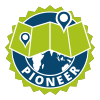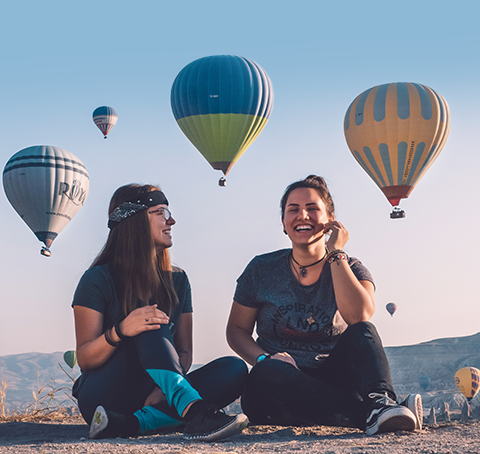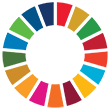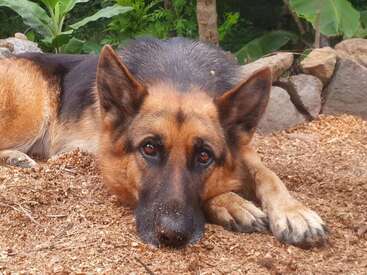Information du profil

Évaluation d'hôte
100 %

Last replied
13 déc. 2025

Taux de réponse
98.3 %
Répond généralement ≤ 1 jour

Feedback
63

ID verified

E-mail vérifié
Badges (5)






Trouvez votre hôte idéal
Infos

Description
Stay with us by a beautiful lake, wake up to the sound of birds, enjoy the sunrise from our beach, disconnect from the noise, become more sustainable, feel the essence of nature and climb the volcano where we live.
We are looking for self-sufficient and collaborative individuals to join our team of four volunteers dedicated to maintaining and guarding the property. We offer a straightforward exchange: your work in return for food. If you value independence, don't mind routine tasks, love being surrounded by nature and embrace a self-directed way of living, this could be the perfect fit for you!
--------------------------------------
📢 📢 𝗣𝗟𝗘𝗔𝗦𝗘 𝗣𝗟𝗘𝗔𝗦𝗘 𝗣𝗟𝗘𝗔𝗦𝗘: 𝗕𝗲𝗳𝗼𝗿𝗲 𝗰𝗼𝗻𝘁𝗮𝗰𝘁𝗶𝗻𝗴 𝘂𝘀, 𝘄𝗲 𝗸𝗶𝗻𝗱𝗹𝘆 𝗮𝘀𝗸 𝘆𝗼𝘂 𝘁𝗼 𝗰𝗮𝗿𝗲𝗳𝘂𝗹𝗹𝘆 𝗿𝗲𝗮𝗱 𝗼𝘂𝗿 𝗲𝗻𝘁𝗶𝗿𝗲 𝗽𝗿𝗼𝗳𝗶𝗹𝗲 𝗮𝗻𝗱 𝗰𝗵𝗲𝗰𝗸 𝗼𝘂𝗿 𝗮𝘃𝗮𝗶𝗹𝗮𝗯𝗶𝗹𝗶𝘁𝘆. 𝗪𝗲 𝗱𝗼 𝗻𝗼𝘁 𝗺𝗮𝗸𝗲 𝗲𝘅𝗰𝗲𝗽𝘁𝗶𝗼𝗻𝘀. 𝗢𝘂𝗿 𝗺𝗮𝗶𝗻 𝗴𝗼𝗮𝗹 𝗶𝘀 𝘁𝗼 𝗮𝘃𝗼𝗶𝗱 𝗮𝗻𝘆 𝗺𝗶𝘀𝘂𝗻𝗱𝗲𝗿𝘀𝘁𝗮𝗻𝗱𝗶𝗻𝗴𝘀 𝗼𝗿 𝗺𝗶𝘀𝗺𝗮𝘁𝗰𝗵𝗲𝗱 𝗲𝘅𝗽𝗲𝗰𝘁𝗮𝘁𝗶𝗼𝗻𝘀, 𝗲𝗻𝘀𝘂𝗿𝗶𝗻𝗴 𝘁𝗵𝗮𝘁 𝘆𝗼𝘂𝗿 𝗲𝘅𝗽𝗲𝗿𝗶𝗲𝗻𝗰𝗲 𝗵𝗲𝗿𝗲 𝗮𝗹𝗶𝗴𝗻𝘀 𝘄𝗶𝘁𝗵 𝘄𝗵𝗮𝘁 𝘄𝗲 𝗼𝗳𝗳𝗲𝗿. 𝗧𝗵𝗮𝗻𝗸 𝘆𝗼𝘂 𝗳𝗼𝗿 𝘁𝗮𝗸𝗶𝗻𝗴 𝘁𝗵𝗲 𝘁𝗶𝗺𝗲 𝘁𝗼 𝗿𝗲𝘃𝗶𝗲𝘄 𝗲𝘃𝗲𝗿𝘆𝘁𝗵𝗶𝗻𝗴 𝘁𝗵𝗼𝗿𝗼𝘂𝗴𝗵𝗹𝘆 𝗯𝗲𝗳𝗼𝗿𝗲 𝗿𝗲𝗮𝗰𝗵𝗶𝗻𝗴 𝗼𝘂𝘁 📢 📢
--------------------------------------
𝗡𝗘𝗫𝗧 𝗔𝗩𝗔𝗜𝗟𝗔𝗕𝗜𝗟𝗜𝗧𝗬 (𝗶𝗻𝗱𝗶𝘃𝗶𝗱𝘂𝗮𝗹): 4th January!
𝗡𝗘𝗫𝗧 𝗔𝗩𝗔𝗜𝗟𝗔𝗕𝗜𝗟𝗜𝗧𝗬 (𝗰𝗼𝘂𝗽𝗹𝗲): 15th February!
𝗠𝗜𝗡𝗜𝗠𝗨𝗠 𝗦𝗧𝗔𝗬: 4 weeks
𝗢𝗡𝗟𝗬 𝟮𝗛 𝗪𝗢𝗥𝗞: compared to the average 5h+/day requested by most hosts
𝗦𝗣𝗟𝗜𝗧 𝗖𝗢𝗦𝗧𝗦: we split the cost of food, with volunteers optionally contributing an average small amount of approximately Q40 per day
𝗨𝗡𝗜𝗤𝗨𝗘 𝗣𝗥𝗢𝗝𝗘𝗖𝗧: secluded, silent, nature, slow life, lake beach, stunning views
--------------------------------------
Hello! My name is Hugo and I live on the slopes of San Pedro volcano in Guatemala, in a wild and truly isolated area of Lake Atitlan, accessible only by water. There are no roads, no close neighbors and no noise. Just pure nature, the songs of birds and a stunning beach. I’m on a journey to build a home in this paradise. Most of the time, I share this space with volunteers, some chickens and three dogs.
Over the past four years, I’ve welcomed more than 100 volunteers, and together we’ve worked on a variety of projects aimed at becoming more self-sufficient and sustainable, while continuously expanding our knowledge along the way. The following activities won’t be part of your assigned tasks, but during your free time, you’ll have the chance to explore them and deepen your understanding if you're interested:
-Beach creation: we constructed two massive natural retaining walls that not only help us collect an abundance of sand for future construction but also allow us to create our very own beach. A serene spot where the lake meets the land, perfect for relaxation and enjoying the breathtaking views.
-Bulrush cultivation: along our lakeshore, we’ve introduced bulrush, a remarkable aquatic plant. Its roots help reduce water contamination and when dried, its leaves become versatile materials for crafting mats, pillows and more. It’s a perfect example of using nature’s gifts to enhance both our environment and daily life.
-Multi-grafted trees: we’re preparing rootstocks for 10 different fruit tree genera (citrus, prunus, persea, mangifera, malus, pyrus, solanum, morus, ficus and annona). In just a few years, these trees have the potential to produce over 50 different types of fruit, creating a diverse and bountiful orchard that nourishes both body and soul.
-Vermicomposting: we manage a thriving population of over two million Eisenia fetida (red wigglers/Californian red worms) that diligently process 100% of our food waste, turning it into rich, fertile compost that feeds our gardens and plants.
-Dry toilet composting: thanks to wild Hermetia illucens (black soldier fly larvae), we’ve successfully achieved 100% feces processing. This sustainable approach not only eliminates waste but also contributes to a healthier environment.
-Chickens: We’re developing a resilient, semi-autonomous breed of chicken adapted to local conditions. Now in its second generation, this hardy lineage plays an important role in our ecosystem and long-term sustainability goals.
-Living mulch: to keep our soil healthy and protected, we use four different species as cover crops: white clover, comfrey, baby sun rose, mint, tradescantia and asthma plant. These living mulches enrich the soil, prevent erosion and support biodiversity.
-Plant diversity: in addition to the native species of the area, we’ve introduced a wide variety of other plants: cacti, palms, succulents, orchids, medicinal and aromatic herbs that we’ve gathered from friends, local nurseries and places we’ve visited. This rich diversity not only enhances the beauty of our surroundings but also supports a more resilient ecosystem.
-Species identification: we are actively documenting the animal biodiversity on our land using the iNaturalist application. To date, we have recorded over 350 species, contributing valuable data to the scientific community and fostering a deeper connection with the natural world around us.
-Nursery: we’ve created a dedicated plant nursery space where we care for over 5,000 small seedlings and propagate numerous plant species. This nursery is the heart of our reforestation and gardening efforts, ensuring a continuous supply of healthy, vibrant plants.
-Irrigation systems: we use a variety of efficient irrigation methods, including sprinklers, drip tape, blind hose drippers and oscillating sprinklers. These systems ensure optimal water distribution, promoting healthy plant growth while conserving resources and enhancing sustainability.
-Tree forest: half of our land is being reforested with a diverse mix of trees: pine, cypress, cedar, teak, eucalyptus, jacaranda, matilisguate, mango, lychee, jackfruit, papaya, lemon and other firewood, fruit and medicinal trees. This growing forest will provide resources for generations to come and restore the natural balance of the land.
-Solar system: we have a renewable energy setup consisting of solar panels, an inverter and a battery, ensuring a reliable and sustainable power supply. Additionally, a submersible pump with an auto-filling tank and level control provides a consistent water source. The entire system, including piping and wiring, is designed for maximum efficiency and self-sufficiency.
-Transforming raw materials: from jams and tinctures to soaps, shampoos and lipsticks, we’re committed to making the most of the abundance nature provides. We transform raw materials into a wide range of products: syrups, glycerates, balms, wines, vinegars and incenses, oils; ensuring nothing goes to waste and everything is cherished.
Types d'aide et opportunités d'apprendre
Aide avec des éco-projets
Jardinage
Bricolage et construction
S’occuper des animaux
Aide dans une ferme
Cuisine/repas pour la famille
Aide à la maison
Entretien général
Home sitting

Centres d’intérêt
TechnologieDev. durableFermeSoin des plantesMusiqueJardinageAstronomieAnimauxVoile / bateauNatureMontagneRandonnéeCyclismeCampingSports d'aventure
Objectifs de développement durable de l’ONU que cet hôte essaie d'atteindre

Echange culturel et opportunités d'apprendre
The local language spoken around this part of Lake Atitlan is Tz'utujil, a living testament to the rich heritage of the Mayan people. The inhabitants of Santiago Atitlan, the nearest town, actively preserve and practice it. This vibrant town is not just a place to visit but a cultural experience in itself. You can reach it by rowing a boat in about 45 minutes (you’ll need to rent your own boat in town for just Q3 per day) or if you prefer a quicker journey, a private motorboat ride takes only 5 minutes and costs Q50. Once there, you can immerse yourself in the local culture by visiting the bustling markets filled with whandmade crafts, traditional Tz'utujil clothing and fresh produce.
You can also withdraw money, enjoy a meal or a coffee at one of the town’s restaurants or buy a SIM card to stay connected. From Santiago, you can catch motorboats to explore other towns around the lake, with an average trip costing Q25.
While you're here at the project, your free time can be as active or as relaxing as you like. We encourage creativity and personal projects, offering tools for those who want to build, carve or craft something unique. The lake is perfect for swimming, fishing or trapping crabs. You might also find joy in painting, reading or simply lounging in a hammock with the sounds of nature all around you.
For those eager to explore further, we offer GPX tracks for a variety of treks that will take you through some of the most breathtaking landscapes:
-San Pedro volcano (5h 10km 1500m+)
-Toliman volcano (8h 19km 1600m+)
-Atitlan volcano (6h 13km 1600m+)
-Tepepul waterfalls (5h 12km 900m+)
-Chuitinamit (2h 5km 200m+)
-Walk to San Pedro village (3h 7km 100m+)
-Walk to Santiago village (6,5h 15km 300m+)
For more leisurely pursuits or to dive into the rich culture of the region, there are several tourism and relaxation options available. You can immerse yourself in local traditions, visit pottery studios, join a coffee or cacao tour, participate in a Mayan ceremony or simply enjoy the natural hot springs. Here are some of the tours you can take:
-Santiago Atitlan: Experience Tz’utujil heritage and colorful local markets
-San Lucas and Cerro de Oro: Traverse breathtaking landscapes around mystical Cerro de Oro
-San Juan and San Pedro: Explore artisanal textiles, coffee culture and scenic viewpoints
-San Marcos and Tzununa: Discover holistic practices, spiritual retreats and refreshing waterfalls
-Jaibalito and Santa Cruz: Enjoy peaceful trails, panoramic views and local cuisine
-Panajachel and Sololá: Experience bustling commerce and spectacular lake views
-San Antonio and Santa Catarina Palopó: Admire vibrant facades and ancient weaving traditions
-Xela/Fuentes Georginas thermal baths: Relax in steamy hot springs; explore this lively city
Aide
Help is 2 hours per day, always from Monday to Friday, usually from 7:00 to 9:00 or from 10:00 to 12:00. This schedule is fixed and not flexible. All volunteers choose one of those shifts and share the same days off (Saturday and Sunday).
Depending on the day or time of the year, the tasks may be organized by me, a local worker, or someone else, such as my partner, a close friend, or a lead volunteer. Sometimes I’ll be there to guide the tasks directly; other times, another person will take the lead. In some cases, one of us will explain the work in advance, and you’ll carry it out independently.
Currently, Eliseo, a local worker, is in charge of coordinating the volunteers. He speaks Spanish and Tz’utujil, but no English. He has extensive experience working with volunteers who don’t speak Spanish and communicates effectively through gestures, examples, and a patient approach to make sure everyone understands the tasks.
The tasks vary throughout the year depending on the seasons and since the property is very large, tasks often require consistent focus for extended periods. For this reason, it’s very likely that you will be doing the same task for the entirety of your stay.
During the rainy season, tasks primarily involve clearing vegetation, while in the dry season, the focus shifts to building dry stone walls, moving rocks and sand or digging trenches and holes. However, depending on the needs at the time, your tasks may vary depending on the priorities during your stay, as other types of work may also be required. Regardless of the exact nature of the work, meeting the following key physical and mental requirements will help you determine if you're well prepared for the job. Feel free to ask us if you have any specific questions.
Physically
-Ability to lift 25 kg and walk 100 m: Ideal for those who enjoy staying active and fit.
-Work in the sun for up to 4 hours (max 26°C): Enjoy a pleasant outdoor environment.
-No allergies to bees, mosquitoes, dogs or cats: Interact with nature worry-free.
-Paddle for 45 min in a flat bottom canoe (applicable only if you can’t pay for a motorboat ride or adapt to isolation): A chance to enjoy canoeing.
Mentally
-Adapt to isolation (applicable only if you can’t paddle or pay for a motorboat ride): Develop independence and mental resilience.
-Perform the same work each day: Ideal for those who prefer routine and stability.
-Follow precise instructions and accept feedback positively: Ensure tasks are completed accurately and consistently.
Langues parlées
Catalan: Courant
Anglais: Courant
Espagnol: Courant
Français: Courant
Hébergement
We offer a tent, a mat and a sleeping bag.
In our outdoor kitchen, you'll find a well equipped setup with a fridge, a freezer, a gas stove, a boiling pan, a cast iron pan and essentials like plates, glasses and cutlery. We use a multi-purpose washing sink that is used for doing dishes, washing clothes and occasionally for processing chickens. We make sure to clean the sink thoroughly with dish soap before and after each use.
Our kitchen is stocked with fruits, vegetables, rice, muesli, wheat flour, eggs, beans, vinegar, oil, salt and spices, so you’ll have everything you need to prepare your meals throughout the week. If you want something more specific like honey, milk, cheese, coffee, pasta, peanut butter, olive oil, other grains such as lentils, chickpeas or quinoa, meat, fish, or special fruits and vegetables other than the ones we provide, you’ll need to purchase them at the village market. Occasionally, I do wholesale grocery runs and when I do, some of these premium or specialty items will be available to you at a lower price than in the village.
We now have solar panels and electricity in the kitchen area. There is limited electricity time to charge devices every day from 9 am to 1 pm and the lights in the kitchen are turned on for 2 hours after dusk. We still highly recommend bringing a good flashlight or headlamp, because there is no electricity or lighting in the rest of the property.
Cooking, cleaning and tidying up the common areas are shared responsibilities and while these tasks are not included in work hours, we expect everyone to pitch in equally.
We use a dry toilet and an outdoor cold shower. While we don’t yet have a biodigester, it is essential that volunteers bring only eco-friendly hygiene products. When you arrive, we will check the products you bring; if they are conventional, we will kindly ask you to purchase the eco-friendly options we offer here at reasonable prices: soap Q25, toothpaste Q25, shampoo Q30, and mosquito repellent Q30.
We have unlimited firewood available, so you can make fires every day to cook, gather around for good conversations or simply unwind by the glow of the flames in the heart of nature.
Autres infos...
We never leave the property unattended, so we always coordinate to ensure that at least one of us stays behind.
We align with nature’s rhythm by waking up early at 6:00 AM and going to bed around 8:00 PM, encouraging a lifestyle that follows the natural cycles. This is not the place for night owls, as noise from late-night activities can disturb those who are already resting. Furthermore, working very early in the morning is crucial to avoid the heat of the sun. At 8:00 PM, when the kitchen lights are turned off, we ask for absolute silence in the shared kitchen area to ensure everyone can rest peacefully.
I will be out of the country for a few months. At the moment, Eliseo, a local worker, arrives each morning to organize tasks and work alongside the volunteers, sometimes providing instructions for independent work. Volunteers are expected to live independently during the week, which may involve spending some time alone or with other volunteers. Please note that Eliseo will only be present from Monday to Friday, so volunteers need to coordinate among themselves to ensure that someone remains on site during the weekends.
In general, the setup may vary: sometimes I might be on site and directly guiding the work, sometimes another collaborator will take the lead, and other times one of us may only come certain days to coordinate and explain tasks so volunteers can carry them out independently. There may also be periods when I am abroad and not present at all. This level of independence is part of the experience. I am always happy to provide support whenever I am here, and remotely when I am not. However, if you prefer a host who is constantly on site, this arrangement may not be the right fit for you.
We share this beautiful land with a diverse array of wildlife, including some potentially dangerous creatures like coral snakes, rattlesnakes, black widows and scorpions. Fortunately, these animals are rarely active during the day, so maintaining a daytime routine is a good precaution. While we've never needed it, the nearest hospital is just a 5 minute motorboat ride away, giving us peace of mind.
Our location is quite remote, which is an important consideration. Social life here is minimal, and if you need to stock up on personal supplies, take care of errands, access more electricity than the 4 hours we provide daily, or simply have a change of scenery, you may need to head into town. You can do so by rowing (45min), taking a motorboat ride across the lake (Q50), or hiking through the forest (2h).
Due to our altitude, temperatures here are generally cooler than in other parts of Guatemala, with a typical range from 14-27°C throughout the year. The dry season (November to May) usually brings little to no rain, perhaps once a month, while the wet season (May to November) sees afternoon showers three to four days a week.
Additionally, during the rainy season, the humidity brings an increase in mosquitoes, while in the dry season, flies are more common due to the warmer weather. If insects are particularly bothersome for you, please keep this in mind when considering your stay here.
Informations complémentaires

Accès Internet

Accès Internet limité

Nous avons des animaux

Nous sommes fumeurs

Familles bienvenues

Possibilité d’accueillir les digital nomads
Absolutely! We have solar panels, and electricity is available every day from 9 am to 1 pm to charge your devices. While we don't have WIFI, a local SIM card with 4G coverage works perfectly, making it easy to be a digital nomad here.

Espace pour garer des vans
If you're traveling in a campervan or motorhome, there's a place in Santiago Atitlan where you can park for a fee. It's called Firefly Garden.

Combien de volontaires pouvez-vous accueillir ?
Plus de 2

Mes animaux
Creole Chicken (10 mois)
Our egg and meat producers. They live freely and are part of the natural cycle of the place.
Jocote (4 ans)
The dog who watches over the land. Independent and vigilant, he keeps intruders at bay.
Discutez avec des workawayers qui ont séjourné chez cet hôte






Feedback (37)
The place is surrounded by beautiful nature that you can enjoy all day long, the direct access to the lake gives you the perfect refreshment after work and the tranquility and silence invites to just… read more
Photos
Discutez avec des workawayers qui ont séjourné chez cet hôte






Feedback
Ce sont des évaluations supplémentaires en option lorsque les membres laissent un feedback. La note moyenne pour chaque option est affichée.
Exactitude du profil:
(5.0)
Échange culturel:
(4.8)
Communication:
(5.0)
The place is surrounded by beautiful nature that you can enjoy all day long, the direct access to the lake gives you the perfect refreshment after work and the tranquility and silence invites to just… read more
Thank you so much for… read more
About half of the… read more
The work can be physical and challenging but very rewarding and also a good mixture of easier tasks. The vibe was chill but straightforward and clear what is expected. You then have all afternoon and weekend to relax/swim/read/hang out with other volunteers. we really enjoyed trips out into town and… read more
For me it was a really good deal. You are mostly 3-4 people which is great for community and just half a day of work for all the food… read more
It's a simple and peaceful lifestyle; camping, waiking up with the sun, swimming in the lake, cooking, hiking, sailing with the canoe, playing cards or chess with the others volunteers.
It's a great… read more
You need to adapt - like sleeping in a tent or a hammock, to wash (yourself and your clothes) in the lake and to share the food (that Hugo buy… read more
I highly recommend Tristan to any host looking for a hardworking,… read more
The place is simply magical, surrounded by the most gorgeous lake, on the slopes of a volcano. It felt unreal to wake up there every morning.
Hugo is a great host that cares about his volunteers, very fair about the work and he provided us with plenty of food to cook… read more
Au plaisir de te revoir !
The view on the lake is stunning, it's the perfect place to disconnect from the digital life since there's no electricity (although network signal is good, in case you want to make video calls), and it felt like a nice adventure everytime we paddled to Santiago to recharge our devices.
Hugo is a very good… read more
The work is hard, but I really enjoyed it too: I got very good at digging up roots! It's the perfect place to reconnect to yourself - both in the work and in my free time, I felt… read more
They are smiley and nice people, they are expert vegan food cookers, they worked hard and added a really nice vibe to the community.
i enjoyed my stay by the lake and am happy to have met everyone.
the place itself is as peaceful and quiet as it gets (most of the time) which is nice. plenty of time to become a pro after work, playing with the dogs, swimming, hiking the volcano( super steeep),or cooking something nice with all the lovely… read more
Paul es una persona muy alegre, divertida y creativa! Cumplió en todo momento las expectativas de trabajo y fue un gusto vivir en comunidad con él.
Muchas gracias Paul!! Vuelve pronto ;)
We recommand 100% to come here! However we think it is better to come here… read more
Looking forward to hosting you again soon.… read more
Fred was very motivated when doing his tasks, he was always the first person to grab a tool when the working time arrived, he was also curious and wanted to learn a lot. When… read more
Te echaremos de menos, Javi!
Es muy bueno, claro y directo al momento de asignar la tareas, las cuales pueden ser todo tipo. Tambien se vive mucho… read more
It's true that there's something very special about it... It could be the beauty of the Atitlan lake, the surrounding volcanos, the human exchange, Milpa & Jocote or you😁
We had a really great and unique time with you guys! Thank you as well to Sid, Fred, Javiera : you are amazing… read more
Hugo is an easy going person, always in good mood and trying to find solutions if there is problems! I had great moments there with him, the others volunteers and the two lovely dogs!
About the work he is flexible and I could choose if I prefer to work on mornings/afternoons and which days off I wanted to take!
The place… read more
Please come back dude!
I spent two wonderful weeks in the company of Hugo a very easy man and amazing person the other volunteers was super cool, I really enjoy my time
the place is beautiful I recommend to all nature lovers
I will come back for sure
Thank Hugo
MS
Thanks so much guys can’t wait to come back
We were more than pleased to have you on our land and hope to host you again one day :)
We were more than pleased to have you on our land and hope to host you again one day :)
Thank you for… read more
If you want to discover a little piece of virgin paradise it is here! Never have I felt… read more















































